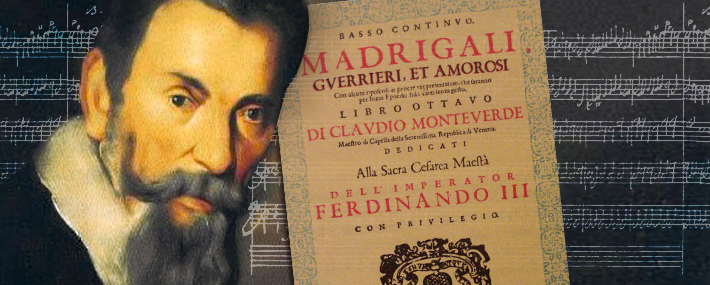Claudio Monteverdi | A revolutionary composer
Claudio Monteverdi, a revolutionary composer
Claudio Monteverdi is regarded as the revolutionary composer who led the transition between Renaissance and Baroque music.
Monteverdi was born in 1567 in Cremona, a town in Northern Italy now famous for being the birthplace of the most famous violin manufacturer of history, Antonio Stradivari .
Monteverdi was the eldest of five children and son of Baldassare, doctor, apothecary and surgeon. Very young he started studing music and singing with the maestro di cappella at the Cathedral in Cremona first and then followed up at the Cremona Conservatory.
Motets and sacred madrigals
Monteverdi first motets and sacred madrigals were published between 1582 and 1583. These compositions are the main part of Monteverdi’s production.
Motectum is a Latin word that describes the different melody of many voices overlapping. During the renaissance motets changed entirely they character to embrace a polyphonic setting. They were still composed over a Latin text, usually sacred.Yet they were no longer connected to the specific liturgy, therefore could be performed on different occasions. These motets are also referred to as madrigali spirituali, sacred madrigals.
Madrigal is instead a vocal composition on a secular text. The number of voices can vary from two to eight although most frequently they go from three to six.
Monteverdi, the most important composer of madrigals of the late 16th century
Claudio Monteverdi was the most important composer of madrigals of the late 16th century. In his long career he wrote nine books of madrigals, underlining the transition between the late 16th-century polyphonic style and the early baroque monodic and concertato style, accompanied by basso continuo.

Setting into music the ever-changing world of human feelings
Through the composition of madrigals Monteverdi learned to master with the greatest ability all the newest techniques, for setting into music the ever-changing world of human feelings. His style acquired a suppleness and ductility able to capture any emotional nuance.
The creator of modern opera
Monteverdi reinvents vocal music as a new relationship between the composer and his audience, using to that end his melodies of unprecedented expressivity. He creates modern opera as the public’s right to a performance he can understand, appreciate, being moved or laugh at.
Monteverdi’s last two masterpieces
Monteverdi’s achievements are summarized in his last two masterpieces, Il ritorno di Ulisse in patria, 1641 and L’incoronazione di Poppea, 1642.
Written at the very end of his life, both these operas gave Monteverdi the opportunity of describing diverse situations and personalities, changing feelings and attitudes throughout the plot.
The Incoronazione in particular stands as a synopsis of Monteverdi’s abilities and of his innovative way to use arias for expressive and dramatic purposes.
Listen to the final duet “Pur ti miro, pur ti godo” between Nero and Poppea.
About Sara Filippini
| M | T | W | T | F | S | S |
|---|---|---|---|---|---|---|
| 1 | 2 | 3 | 4 | 5 | 6 | 7 |
| 8 | 9 | 10 | 11 | 12 | 13 | 14 |
| 15 | 16 | 17 | 18 | 19 | 20 | 21 |
| 22 | 23 | 24 | 25 | 26 | 27 | 28 |
| 29 | 30 | |||||

Bergamo | Donizetti's hometown
The birth of Gaetano Donizetti Gaetano Donizetti,

Rimini and Gradara | Francesca da Rimini | The epitome of a tragic love
The compelling power of Zandonai's best opera Fra

Jesi | Wine and Music | Pergolesi and Spontini
Jesi, Giovanni Battista Pergolesi hometown Giovan

Rigoletto in Mantua | Palazzo Te, the pleasure palace
What is Rigoletto it about? This sounds like a sim

Bologna | A setting for Cimarosa's Il matrimonio segreto
Bologna, the perfect setting for a Secret Marriage
Comments